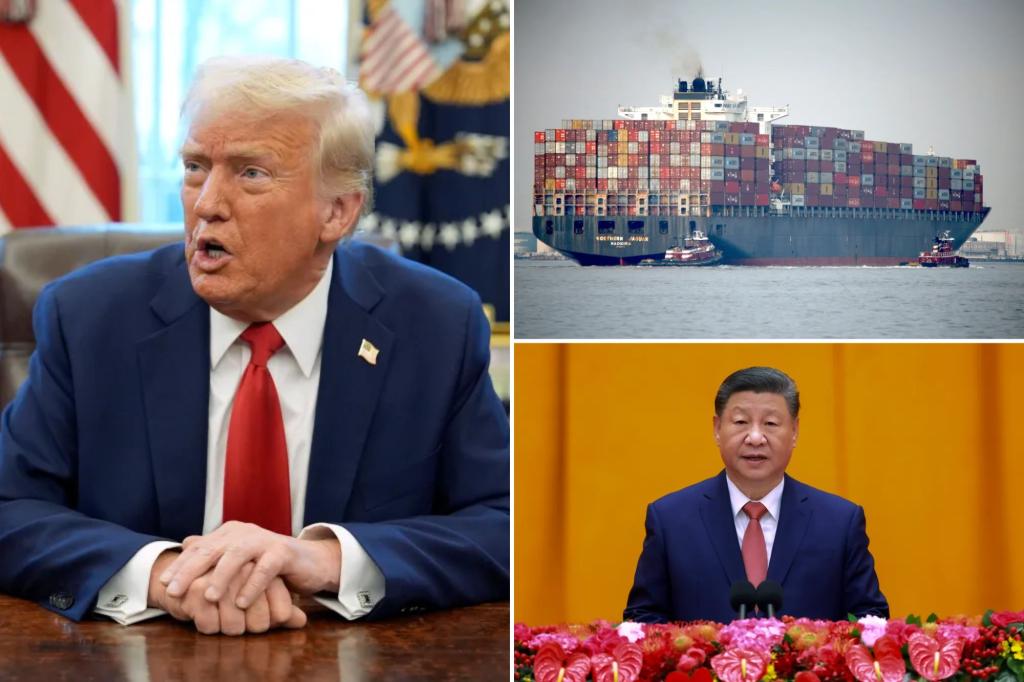The escalating trade tensions between the United States and China took a new turn with the implementation of fresh tariffs on Chinese goods. President Trump invoked the International Emergency Economic Powers Act (IEEPA), citing the fentanyl crisis as a national emergency, to levy a 10% tariff on a range of Chinese imports. This move, according to the White House, aims to pressure China into curbing the flow of precursor chemicals used in fentanyl production, which the administration contends are fueling the opioid epidemic in the US. The administration framed the tariffs as a necessary measure to protect national security and American lives, emphasizing that access to the US market is a privilege, not a right.
China swiftly retaliated, announcing its own set of tariffs targeting American goods. Beijing’s commerce ministry declared a 15% tariff on coal and liquefied natural gas imports from the US, along with a 10% levy on crude oil, large-displacement vehicles, and agricultural machinery. These retaliatory tariffs are scheduled to take effect shortly after the US tariffs, signaling a tit-for-tat escalation in the trade dispute. Concurrently, China initiated an antitrust investigation into Google, further complicating the bilateral relationship. This move adds another layer of complexity to the already strained US-China relations, suggesting that the trade war may extend beyond mere economic considerations.
The fentanyl crisis, a central justification for the new tariffs, has claimed the lives of hundreds of thousands of Americans in recent years. Fentanyl, primarily produced in China, is smuggled into the US through various channels, including land borders, international shipping, and the postal system. The US government has accused China of not doing enough to control the flow of fentanyl precursors, while China maintains it has strict narcotics control policies and blames the US for its internal drug problem. This divergence in perspectives underscores the deep-seated mistrust between the two nations.
Beyond fentanyl, the Trump administration has repeatedly expressed concerns about the substantial US trade deficit with China. The administration views tariffs as a tool to incentivize domestic manufacturing and reduce reliance on Chinese imports. China remains the US’s largest import source, accounting for a significant portion of the trade imbalance. The US argues that these tariffs are a necessary response to unfair trade practices, while China contends they violate international trade rules. This fundamental disagreement fuels the ongoing trade tensions and raises concerns about the potential for further escalation.
While the White House insists that the new tariffs are not intended to spark a trade war, rather a “drug war,” President Trump’s rhetoric suggests a willingness to escalate trade measures against China if a deal isn’t reached. He has hinted at imposing further tariffs on a broader range of Chinese products, including steel, aluminum, copper, pharmaceuticals, and computer chips. This aggressive stance raises the specter of a full-blown trade war, with potentially devastating consequences for both economies and the global trading system.
In contrast to the escalating tensions with China, the US reached temporary agreements with Mexico and Canada to defer the implementation of tariffs on their goods. These agreements were reached after Mexico and Canada committed to increased border security measures to address drug trafficking and other concerns. Mexico agreed to deploy its National Guard to the border, while Canada pledged increased funding and resources for border security. These deals provide a temporary reprieve for Mexico and Canada but highlight the Trump administration’s willingness to use tariffs as leverage in negotiations on a variety of issues, including trade, immigration, and drug control. The future trajectory of these trade relationships remains uncertain, contingent upon further negotiations and the evolving political landscape.


